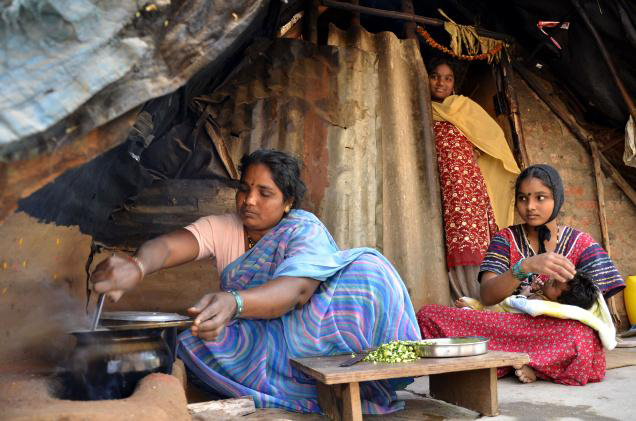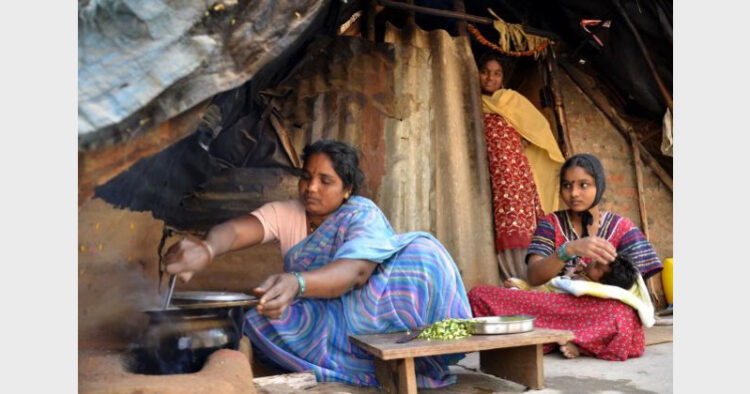Dr MK Bhat

Inflation has compelled people to commit suicide and is still far from control. Jobs are not growing, deficit is quite high and investment environment is at its lowest. Security of country is threatened by China and Pakistan. In desperation; government overnight thought of the Food Security Bill as a Sanjivini which can help it to get the sympathy of common people till the elections are held and after that everything will be as usual. These stunts to get votes will be successful until poverty and misery will go on haunting this country. It seems that politicians are least interested to do away with the problem of poverty for dole politics. They fail to realise that despite poverty, dole politics is getting meaningless for people day by day. It is a reality that if colour tv sets could not fetch votes for a particular party, how 7 kg rice can get? There is no serious effort to have food security for the poor rather it seems that this policy is being framed only with the intension of cheap populism.
The Food Security Bill submitted in the Parliament in December 2011 held that the government will give 7kg of rice ,wheat, millet a month for priority category at Rs 3, Rs 2, Re 1 per kg respectively, 3 kg per person per month for general household at 50 per cent of the support price. The revised Bill was submitted in December 2012 and has been referred to the Standing Committee. If we take the Bill presented in 2011 into consideration, the required food grain as per 2011population level is 60.74 million tons and the corresponding estimated subsidy for 2013-14 costs is about 1,23,084 crore. The budget allocation is 77,740 crore as food subsidy. The number of people below poverty line is 38 per cent but extending the provisions of this Bill to 68 per cent of the population talks of volumes.
There are certain basic questions which expose the intentions of framers of Food Security Bill. Firstly have we identified the beneficiary? Is the distribution set up compatible? Where is the storing facility for the additional procured material? Will it not influence the market price and purchasing from market will be even more harmful for the poor? Have we got enough money to support such a move? The answer to these questions is nowhere with the government and the festivity of framing the Food Security Bill is being celebrated with much fanfare. Perhaps the government has become habitual of celebrating things on papers only.
The big claims of high economic growth rate in the 60 years of our independence gets exposed when one goes through global hunger index which states that 22 per cent of India’s population is undernourished. According to National Family Health Survey 2005-06, 40.4 per cent of children under the age of three are underweight, 33 per cent of women in the age group of 15-49 have a body mass index below normal and 78.9 per cent of children in the age group of 6-35 months are anemic.
It is not just food that will help the poor people of this country to improve their health actually, it is the hygiene facilities, drinking water, sanitation which need equal attention. The low calorie food can only solve their hunger and will not absolve government of its responsibilities .The medical facilities are sick. The government hospitals are losing their sheen because of the low attention of doctors while as private hospitals mean business and are beyond the reach of an average family. The rich enjoy better medical facilities because of their paying capacity whereas poor are treated as sheep and goats in government hospitals where there is every possibility of getting infection rather than treatment.
The big question is; how long this differential treatment of people will go on and when the majority requires nutrients to survive in a better way? India has one third of world poor living on less than 1.25 dollars a day as per a new study of the World Bank. The report came after the World Bank proposed a 12 to 20bn dollar plan to reduce poverty levels over 4 years in poor Indian states.
It is quite laughable that certain people ascribe price rise of food items to the changing diet habits of the poor. When the daily expenditure of more than 75 per cent of population is less then Rs 20 per day how such people can consume protein rich food is not perhaps known to those who argue that the food prices are high just because of the intake of proteins by the majority. Even if it is so, is it not the responsibility of the government to make protein rich food available to its masses? The NSSO survey shows decline in the calorie intake per head over the years.
In order to ensure food to the weaker sections of the society two things need prominently to be taken into consideration, one procurement and second storage facility. A large procurement will distort the food prices in the open market and it will be necessary for the beneficiaries to procure from open market since their full requirement will not be fulfilled by government. 25 to 30 per cent may have to be bought from the open market. The high inflation may restrict them from purchasing in the open market. It seems funny to provide ample food for a few days and starve for the other days. The storing will be another challenge. Currently millions of tons is getting wasted and additional procurement may further increase it adding to the wastage.
Distribution network with half a million fair price shops is the only distributive network available. These shops have earned notoriety for their malpractices. Will there be any chance that the things meant for the weaker sections will not be transferred to the open market. Has the government not come out with any concrete plan to ensure their accountability?
(The writer is Principal in Maharaja Agrasen Institute of Management Studies (GGSIP University), Delhi)














Comments